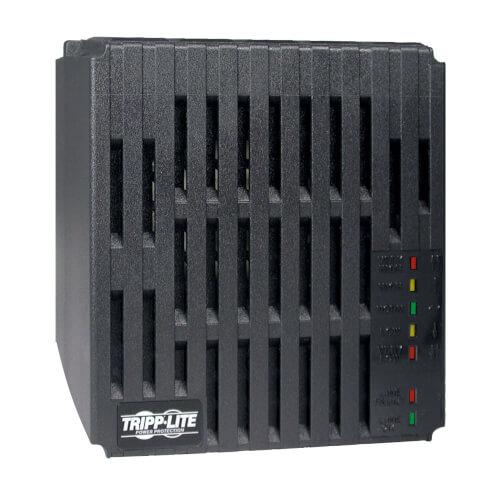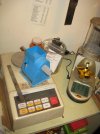You could try the auto voltage regulator, but I'm not an engineer, and I always thought the interference fluorescent lights emitted was from electro magnetics. If the lights are interfering with your electric powder dispenser etc., you need better electric shielding on the device interfered with, or better fluorescent lights.Got a link to said voltage regulator? Will that overcome issues presented by Flourescent lights?
John
You are using an out of date browser. It may not display this or other websites correctly.
You should upgrade or use an alternative browser.
You should upgrade or use an alternative browser.
How accurate is RCBS Chargemaster 1500?
- Thread starter new2mud
- Start date
 Help Support Long Range Hunting Forum
Help Support Long Range Hunting Forum
QuietTexan
Well-Known Member
LEDs are getting cheaper all the time.Will that overcome issues presented by Flourescent lights?
QuietTexan,I use a TrippLite 1200W and a Kill-a-Watt to try to not nuke my electronics:
Amazon product ASIN B000RGF29Q
1200W 120V Line Conditioner, AVR, AC Surge Protection, 4 Outlets | Eaton
1200W Line Conditioner maintains usable 120V nominal output to sensitive electronics during severe brownouts and overvoltages. Prevents surges and spikes from damaging circuitry. Filters out potentially disruptive line noise.www.tripplite.com
What sequence are you running these two in, upstream from your scale? Or does it matter?
Thanks!
PH
QuietTexan
Well-Known Member
Right now the Tripp Lite goes into the wall socket, then the scale wall warts plug into the Tripp Lite. I only turn the AVR on when I need the scales. Kill-a-Watt would either go between the wall socket and the AVR to see what's going into it, or between the AVR and the wall wart to see what's going into the scale. Either works depending on what you want to see, generally putting it into the wall before AVR would be more important because the AVR should be putting out good power.What sequence are you running these two in, upstream from your scale? Or does it matter?
I used to put the Kill-a-Watt into the wall socket and plug the Tripp Lite into to, but after a few weeks I moved it to a power strip running off that same wall outlet and now it sits between my LED lights and the wall outlet. I figured out what the draw was from the scales, confirmed voltage and frequency was good when I'm running my scales (normal lights, computers, etc running at the same time), and now I can see what my printer does to the line voltage when it kicks on, and what the LEDs do when they're running.
The Kill-a-Watt is mainly a tool to check power draw, it records cumulative kWh starting from when it's plugged in to when it's unplugged again. I got it originally to see what was making my power bill so D-word high. Turns out there were some parasitic draws in our TV/cable set up, and the fridge compressor was on it's way out. The yellow Energy Star tag was WAY OFF, that sucker was costing me like $25/mo by itself
I also use the Kill-a-Watt on my generators for backup power to make sure I don't overload them. I have a disconnect outside the house so I can cut myself out of the grid (gotta keep those linesmen safe when they're working to get the lines back up) and run a transfer cord and I can keep my various fridges, freezers, and other things running without snaking a cord all around the house. The power only seems to go out when it's hot here, and I have a lot of meat that needs to be kept cold.
I have the Gen 6, I got at Cabela's and the scale is accurate to .1gr. I have a .01 analytical balance but really never use it. The Gen 6 balance shows you the weight it just dispensed. You calibrate the balance with the 50gr check weight included.
For rifle size charges the .1gr is more than adequate. It is such a small per centage of the total powder volume it is insignificant.
For very small pistol charges it may become a factor. I don't load small pistol with light charges so .1gr is fine.
For rifle size charges the .1gr is more than adequate. It is such a small per centage of the total powder volume it is insignificant.
For very small pistol charges it may become a factor. I don't load small pistol with light charges so .1gr is fine.
Attachments
Last edited:
I have a Auto Trickler v3 with the FX-120i scale and it throws 8 out of 10 spot on, but when it is off I have it set to throw lite and i reach up and turn the trickler a 1/2 turn and it land perfect. I love it. I do know of one guy who wasn't happy with his rcbs 1500 and went to the auto trickler.
Bruce Treloar
Well-Known Member
- Joined
- Dec 28, 2017
- Messages
- 182
Hi bamban, few times I asked a fellow benchrest shooter what powder and load he was shooting and the reply was usually "24.3 on the Culver, but what weight that actual is I have no idea". I shot against Ed Shillen the "Silver Fox", Wally Siebert and Lee Six originator of fiberglass stocks at the Super Shoot in Canberra. Won a couple of nice trophy's and told Lee I was making carbon stocks. He mentioned they would never sell due to the high price of carbon. That's now history but thought you might be interested in a bit of history.Back when I shot short range benchrest in the 80s, customary was to send Lyman 55 to Homer Culver for him to fit his insert in the powder thrower.
Almost all I knew back then loaded ammo in between relays, all charges thrown through the Culver. Screamers were shot even back then.
When we talked about loads the unit of measure was the Culver click.
I still have my Culver/Lyman.
Stonyman88
Well-Known Member
1 grain = .06 grams, on another brand of scale, boy if your not careful with those expensive scales you could have a issue, they show accuracy in G not grains sometime, but for a good scale you looking at $800. dam loading is getting priceyActually RCBS advertises .1 grain accuracy for the 1500. The A&D FX-120i Lab Balance I use with my V3 Autotrickler is .02 grains, and the Sartorious GD 503 is accurate to .005.
There is an interesting article on accurate shooter. A contributor threw low, medium, and large charges with his 1500 and weighed them on his FX120i.
Summary:
"Looked at one way, this test is entirely unfair to the Chargemaster. RCBS has never claimed anything other than 0.1 grain precision for that scale. Holding it to an accuracy level of 0.04 grains seems a very high bar, indeed. And yet the Chargemaster hit that level on ten out of 27 throws.
I'd call that good."
Here is a link to the article:
Yup and we are happy to pay it in order to beat the guy next to us.1 grain = .06 grams, on another brand of scale, boy if your not careful with those expensive scales you could have a issue, they show accuracy in G not grains sometime, but for a good scale you looking at $800. dam loading is getting pricey
